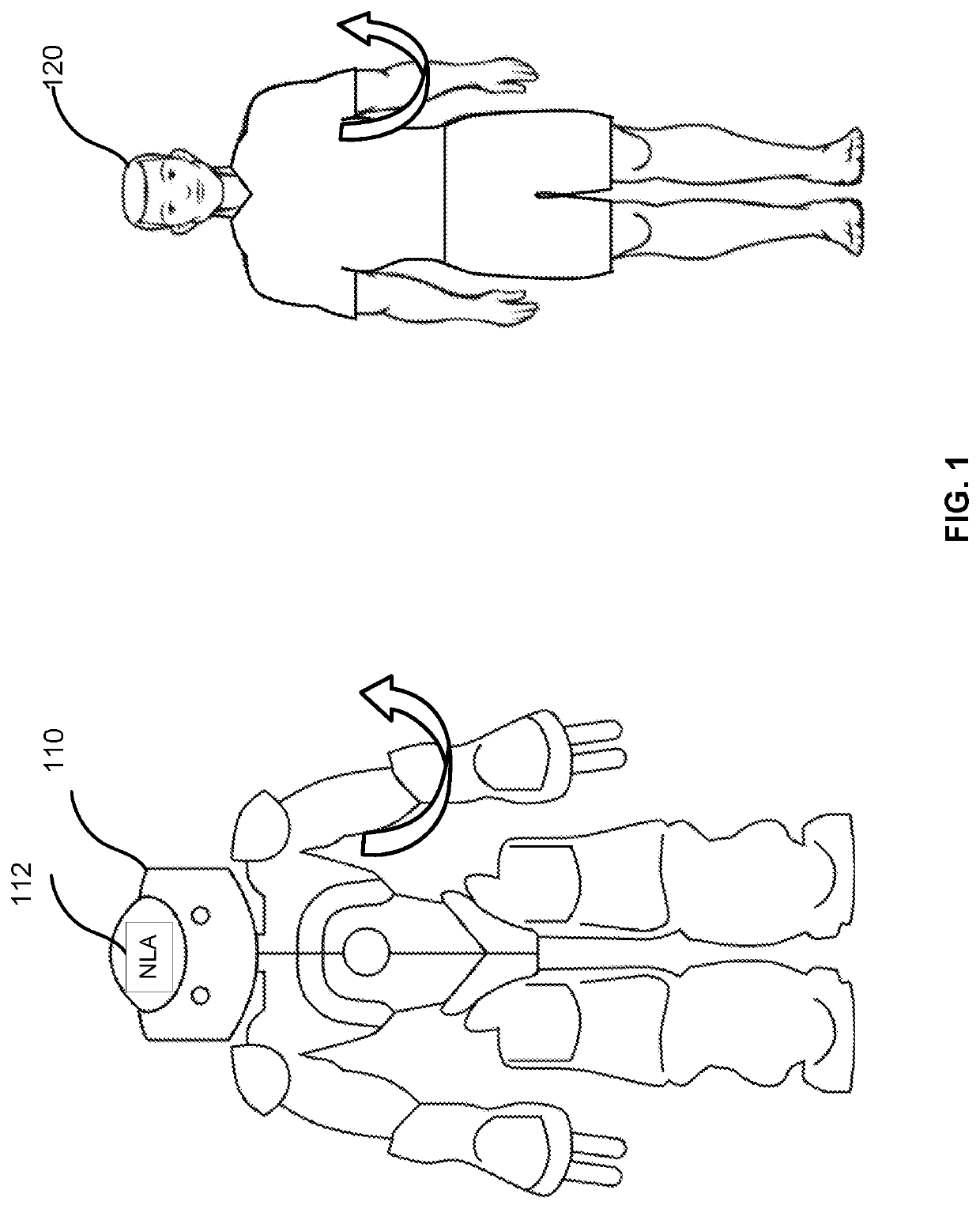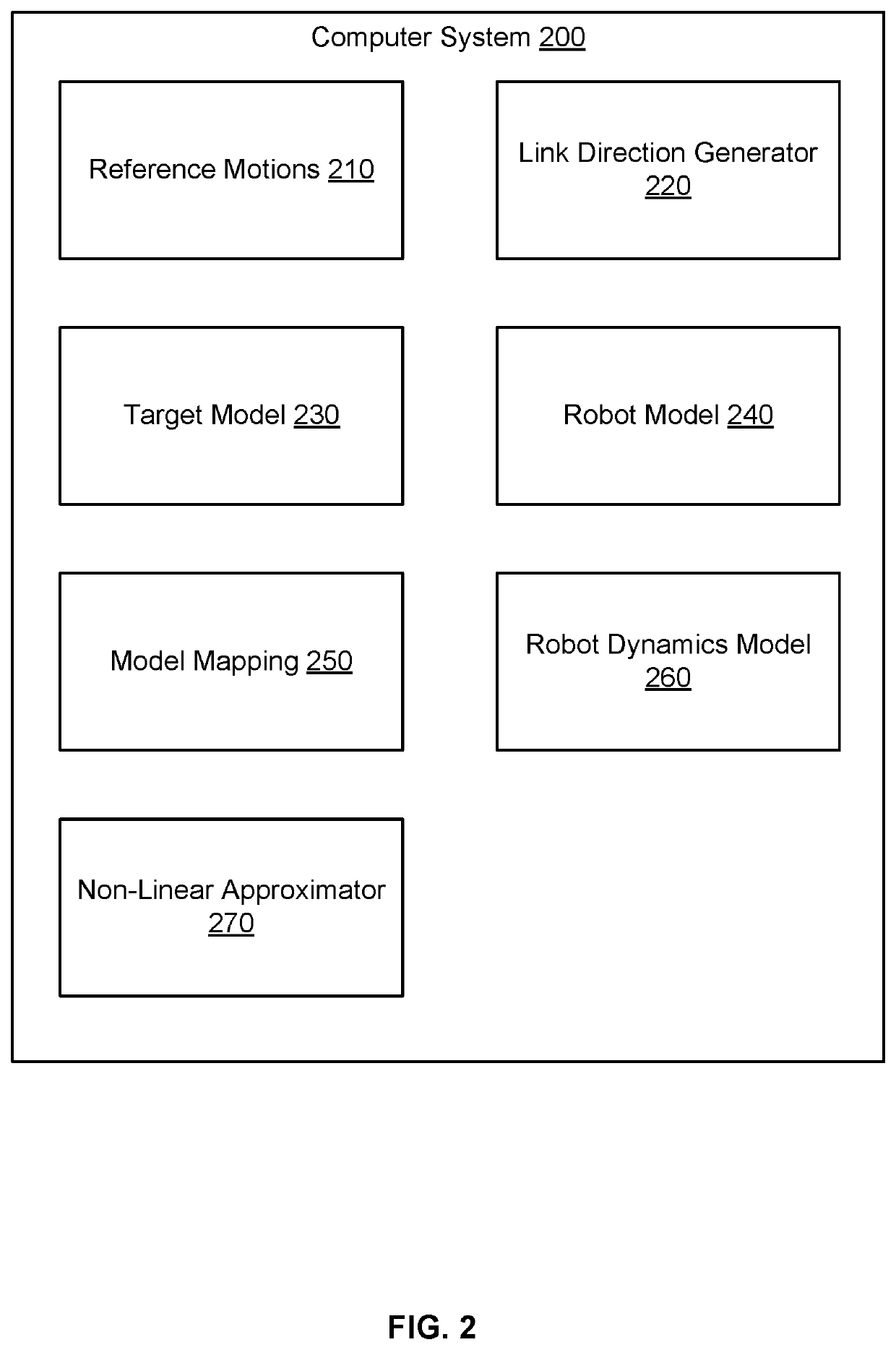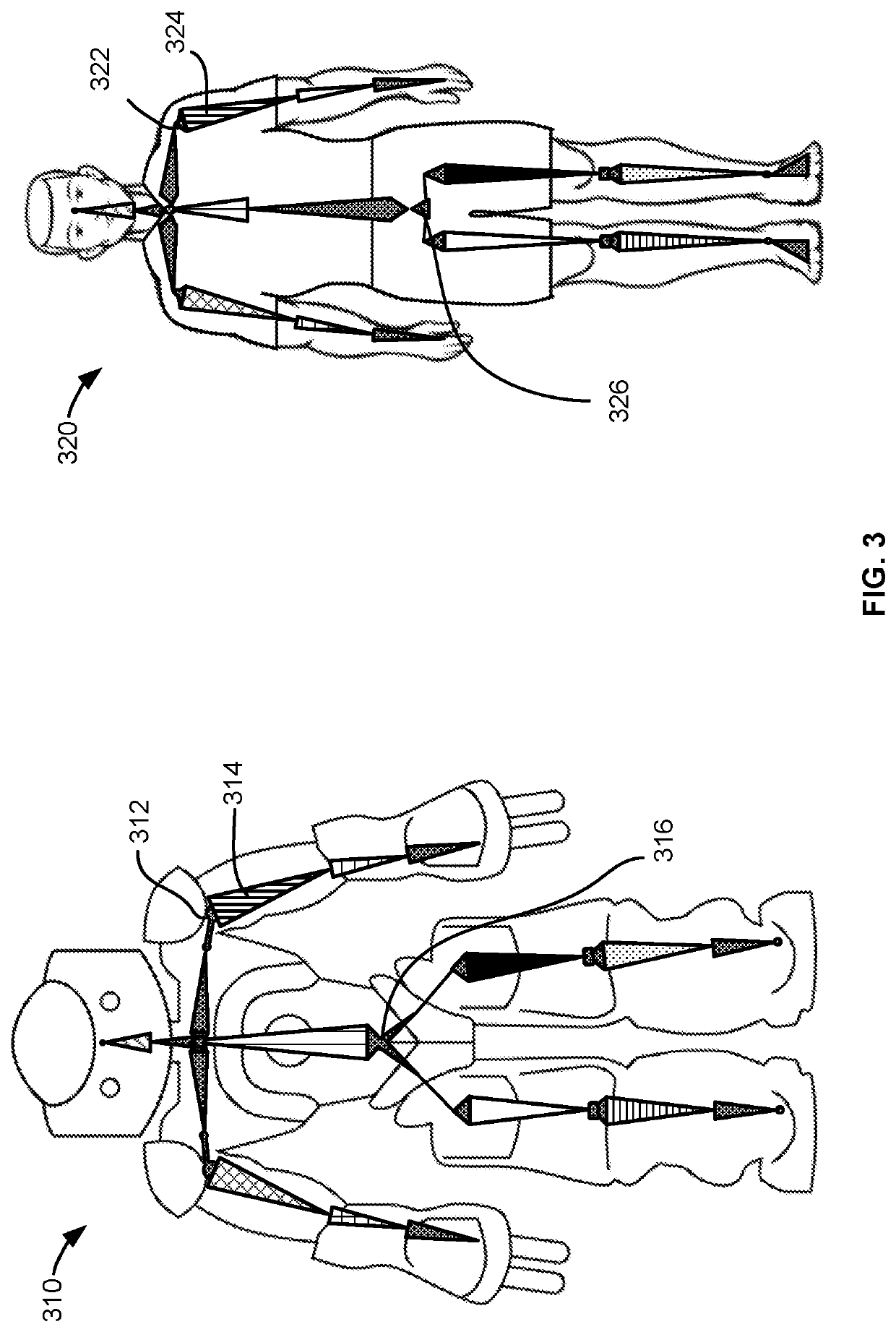Motion Transfer of Highly Dimensional Movements to Lower Dimensional Robot Movements
a technology of high-dimensional movements and robot movements, applied in the direction of programmed manipulators, programme control, instruments, etc., can solve the problems of preserving, affecting the control of the robot's joints, and affecting the simulation of motion while preserving. , to achieve the effect of preserving balan
- Summary
- Abstract
- Description
- Claims
- Application Information
AI Technical Summary
Benefits of technology
Problems solved by technology
Method used
Image
Examples
Embodiment Construction
[0021]Generally, techniques for transferring highly dimensional movements to lower dimensional robot movements are described. In an example, reference motions of a target (e.g., a human) are used to train a robot to mimic the target's motions while preserving balance of the robot. The robot and the target are associated with a robot model and a target model, respectively. The robot model has a lower dimensionality (e.g., degrees of freedom of joints) and different physical properties (e.g., body mass distribution, size, etc.) than the target model. Because of at least the dimensionality differences, directions of links rather than orientations of joints are used to learn how to mimic the reference motions. In particular, a non-linear approximator, such as a neural network, is designed to approximate the reference motions. This non-linear approximator is trained based on motion capture data representing the target's reference motions. Inputs to the non-linear approximator include dat...
PUM
 Login to View More
Login to View More Abstract
Description
Claims
Application Information
 Login to View More
Login to View More - R&D
- Intellectual Property
- Life Sciences
- Materials
- Tech Scout
- Unparalleled Data Quality
- Higher Quality Content
- 60% Fewer Hallucinations
Browse by: Latest US Patents, China's latest patents, Technical Efficacy Thesaurus, Application Domain, Technology Topic, Popular Technical Reports.
© 2025 PatSnap. All rights reserved.Legal|Privacy policy|Modern Slavery Act Transparency Statement|Sitemap|About US| Contact US: help@patsnap.com



